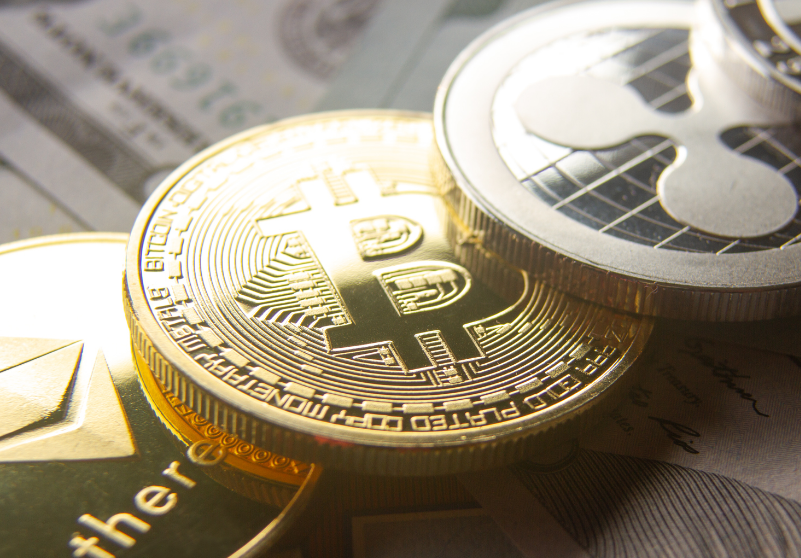In a stunning twist that shakes up the crypto world, Coinbase has just announced it will list Binance’s BNB token, bridging two giant rivals for the first time. This bold step comes amid soaring BNB prices and hints at deeper cooperation in a cutthroat market. What does this mean for traders and the future of digital assets? Dive in to find out.
Coinbase, the top U.S. crypto exchange, revealed on October 22, 2025, that it would add support for BNB on its platform. This marks the first time Coinbase has listed the native token of its biggest competitor, Binance. The move includes the BNB-USD trading pair on the BNB Smart Chain network, opening doors for millions of users in select regions.
The announcement followed weeks of buzz, sparked by Coinbase adding BNB to its listing roadmap earlier in October. Traders can now buy, sell, and hold BNB directly on Coinbase, a platform known for its strict rules and focus on U.S. compliance. This isn’t just a simple addition; it’s a signal of easing tensions between exchanges that once eyed each other warily.
Binance’s founder, Changpeng Zhao, known as CZ, had publicly requested this listing, adding a layer of intrigue. With BNB’s market cap topping $150 billion, it’s the fourth-largest cryptocurrency by value, trailing only Bitcoin, Ethereum, and Tether.
Robinhood, another major player, jumped in too by listing BNB for spot trading around the same time. This double whammy boosts BNB’s reach to everyday investors who prefer user-friendly apps.
Why Rivals Are Teaming Up Now
The crypto industry has long been a battleground, with exchanges fighting for users and market share. But this listing points to a shift toward collaboration. Analysts say it’s driven by the need for better liquidity, where more trading options mean smoother buys and sells without wild price swings.
For Coinbase, adding BNB could attract Binance users frustrated by regulatory hurdles in the U.S. Binance faced heavy scrutiny from authorities, including a $4.3 billion fine in 2023 for compliance issues, as reported by the U.S. Department of Justice. Coinbase, on the other hand, has positioned itself as the compliant choice, listing hundreds of assets while navigating rules carefully.
This move might also stem from market pressures. A 2024 study by Chainalysis showed that cross-exchange listings can increase a token’s trading volume by up to 30% in the first month. By welcoming BNB, Coinbase taps into that potential, potentially growing its user base of over 100 million.
Think about everyday traders: If you’re holding BNB on Binance but want easier U.S. access, this listing simplifies life. No more jumping through hoops with offshore accounts.
- Boosted Accessibility: U.S. users gain direct entry to BNB without relying on international platforms.
- Enhanced Security: Coinbase’s robust checks add a layer of trust for risk-averse investors.
- Market Expansion: BNB holders can now diversify portfolios seamlessly across exchanges.
Market Reactions and Price Swings
BNB’s price reacted with a modest uptick, holding steady near $1,072 shortly after the news broke, according to data from CoinMarketCap tracked on October 23, 2025. While it dipped slightly amid broader market jitters, the listing fueled optimism. Traders on social media platforms lit up with excitement, seeing it as a win for the entire crypto ecosystem.
This comes on the heels of BNB’s strong run this year, climbing over 100% since January 2025, per Bloomberg’s crypto index. The token powers fees and staking on Binance’s ecosystem, making it more than just a coin—it’s a utility powerhouse.
Investors should watch for volatility, though. Past listings on major exchanges have led to short-term pumps followed by corrections. For instance, when Coinbase listed Solana in 2022, its price surged 20% in days before settling.
A quick look at recent trends:
| Exchange | Listing Date | Initial Price Impact |
|---|---|---|
| Robinhood | October 22, 2025 | +2% in hours |
| Coinbase | October 22, 2025 | Steady at $1,072 |
| Binance (original) | Ongoing | Market cap $150B+ |
This table highlights how listings can stabilize or spike values, based on real-time market data from sources like TradingView.
Broader effects ripple out. More liquidity could draw institutional money, as funds prefer assets on regulated platforms. A report from PwC in 2025 noted that 40% of hedge funds now allocate to crypto, up from 25% in 2023, often favoring U.S.-based exchanges.
What This Means for Crypto’s Future
As regulations evolve, this listing could set a precedent for more cross-platform teamwork. Imagine if other rivals followed suit— it might reduce fragmentation in the market, where users often juggle multiple apps.
Challenges remain. Critics worry about centralization if big exchanges dominate listings. Yet, supporters argue it promotes innovation, like BNB’s role in decentralized finance apps on its chain.
For the average person dipping into crypto, this news lowers barriers. It makes building a diverse portfolio easier, potentially shielding against losses in volatile times.
Looking ahead, experts predict BNB could hit new highs if adoption grows. A 2025 forecast from CryptoCompare suggests tokens with strong utility, like BNB, might see 50% growth by year-end, driven by such integrations.
This Coinbase-BNB alliance feels like a turning point, where competition gives way to unity in a maturing industry. It reminds us that even in the fast-paced crypto space, bridges can be built amid rivalries, fostering growth that benefits everyone from casual traders to big investors.


 Bitcoin
Bitcoin  Ethereum
Ethereum  Solana
Solana  Cardano
Cardano  Chainlink
Chainlink  Avalanche
Avalanche  Sui
Sui  Polkadot
Polkadot  Mantle
Mantle  Bittensor
Bittensor  NEAR Protocol
NEAR Protocol  Internet Computer
Internet Computer  Quant
Quant  Aptos
Aptos  Algorand
Algorand  Cosmos Hub
Cosmos Hub  Arbitrum
Arbitrum  Filecoin
Filecoin  Render
Render  Sei
Sei  Jupiter
Jupiter  Optimism
Optimism  Injective
Injective  Stacks
Stacks  The Graph
The Graph  Celestia
Celestia  Pyth Network
Pyth Network  Flow
Flow  Immutable
Immutable  THORChain
THORChain  MultiversX
MultiversX  dYdX
dYdX  Akash Network
Akash Network  Illuvium
Illuvium  Metis
Metis  Manta Network
Manta Network  Dymension
Dymension  Kujira
Kujira